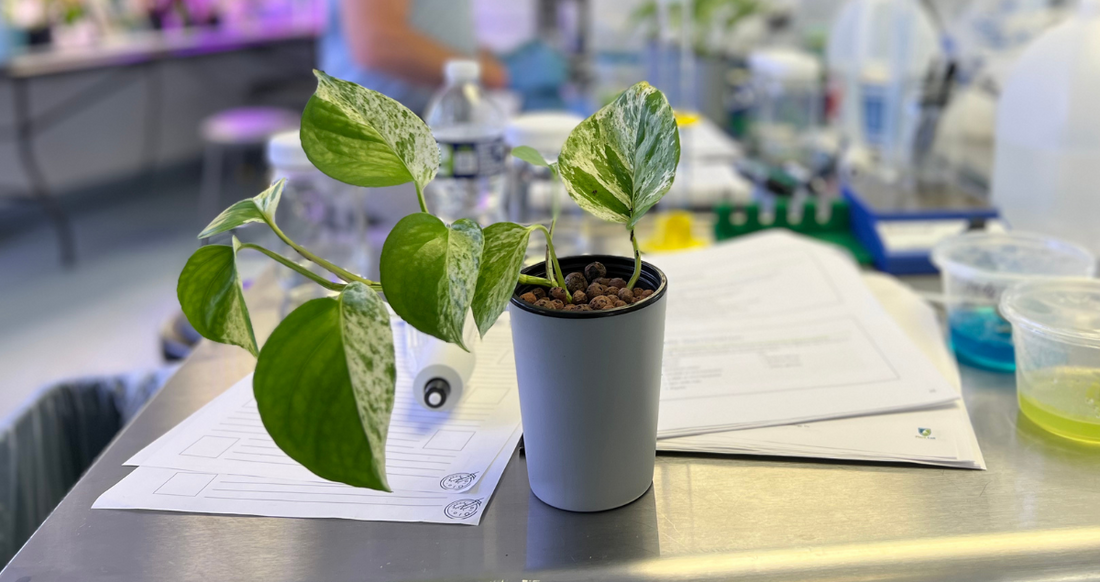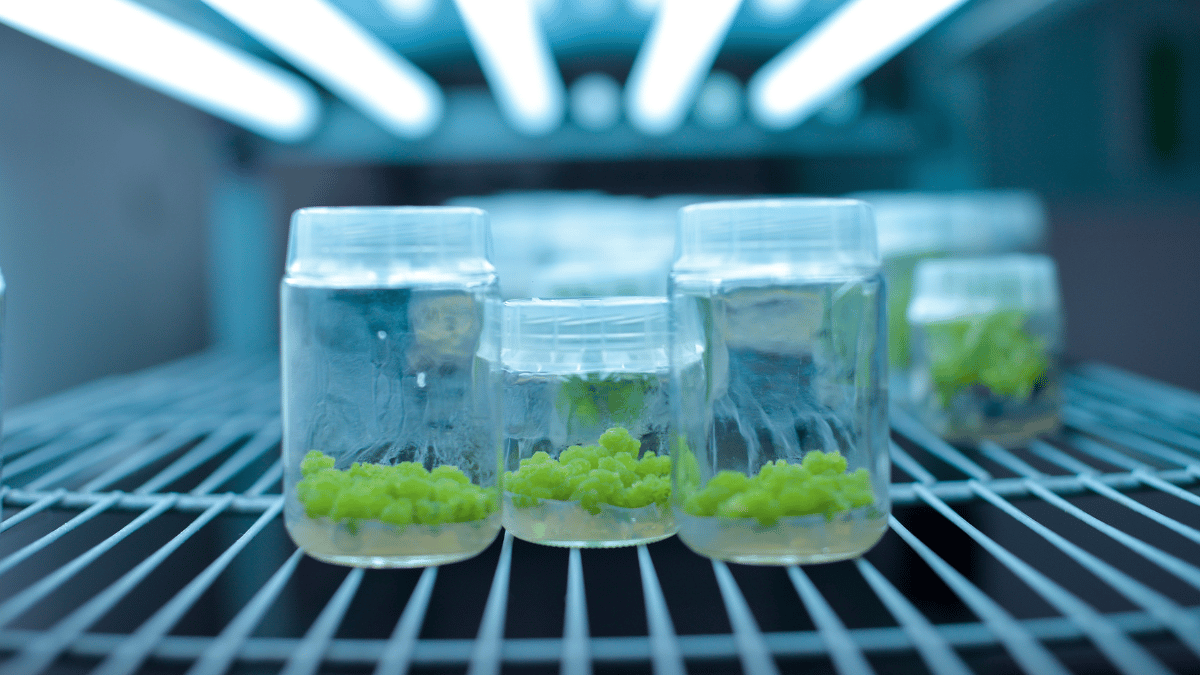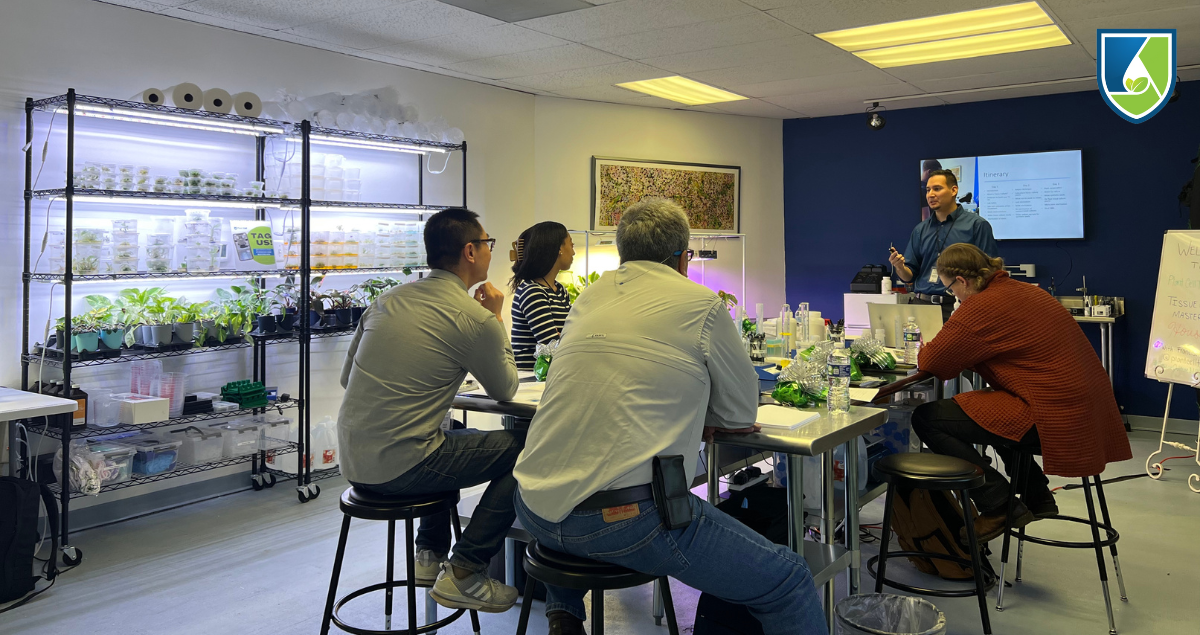
The Top 10 Easiest Plants To Tissue Culture For Beginners
As a content and community manager, I leverage my expertise in plant biotechnology, passion for tissue culture, and writing skills to create compelling articles, simplifying intricate scientific concepts, and address your inquiries. As a dedicated science communicator, I strive to spark curiosity and foster a love for science in my audience.


Introduction
Tissue culture represents a sophisticated plant propagation technique, enabling the regeneration of an entire plant only from a few tissues on artificial media within an aseptic environment.
Theoretically, any plant can be tissue cultured, however, some plants and explants are more responsive than others in the media. Therefore, when you start out in the field look for the plants that are easy to grow.
Here, easy is a relative term as success depends on the availability of a working protocol and the explant you use. For example, it’s recommended to choose herbaceous plants over woody plants. Woody plants secrete polyphenols that inhibit plant growth and make the process harder.
Further, choosing a clean explant is another important factor that you need to consider while tissue culturing. Seeds turn out to be a great explant for higher success and plant production. However, avoid using dormant seeds in your experiments as you might end up getting nothing at all. Working with such difficult explants requires a series of chemical treatments to respond in the media. Furthermore, if you are using older seeds, be sure to thoroughly clean them and surface sterilize them as needed. Growing tips or meristematic tissues are also good explants to use in tissue culture experiments. With these explants, you can also ensure disease-free plant production.
In this article, we will cover the factors that make the plants “easy” to be tissue cultured and the plants that you can work on or tissue culture as a beginner or starting out in the field.

Factors Determining The Ease of Tissue Culture For Different Plants
There are hundreds of plants to choose from while getting started in tissue culture. Each plant has its own procedure for in vitro culturing; all requiring different nutrient media and environments to grow and regenerate as a whole plant. However, the process mostly begins with using hormone-free media to obtain a few tissues and then divide them to grow on a hormone-containing media. You must know for organ regeneration it’s essential to maintain a balance between the auxin and cytokinin levels. For shoot regeneration, a higher concentration of cytokinin than auxin is required but for root regeneration, the case is vice versa.
Determining the ease of tissue culture for specific plants involves considering several factors, including the plant's regeneration capacity, susceptibility to contamination, and amenability to in vitro conditions. It's important to note that the term "easy" is relative and can vary based on individual experiences and preferences.
1. Explants Source and Type:
The choice of explant (tissue taken for culture initiation) significantly impacts success. Plants with easily accessible and responsive explants, such as shoot tips or nodal segments, are often considered easier to culture. Selecting the appropriate explant is crucial in tissue culture, and the age of the explant plays a significant role. Researchers recommend using young plant parts for culturing, as they exhibit better physiological responses in laboratory studies. Young tissues, being newly generated, are more suitable for the surface sterilization process, which, although potentially damaging, is essential for establishing clean cultures.

2. Regeneration Capacity
Plants that exhibit high regeneration capacity, producing shoots and roots efficiently from explants, are considered easier for tissue culture. This trait ensures the rapid development of whole plants. Several factors play a role in determining the tissue culture response of an explant, including explant source, explant size, explant density, explant position in the donor plant, Physiological stage of the donor plant, and genotype. Further, pants with a rapid growth rate are advantageous for tissue culture, allowing the production of numerous plantlets in a shorter time. This is particularly important for commercial applications.
3. Contamination Susceptibility
Some plants are more susceptible to contamination issues in in vitro cultures. Plants that can withstand or have protocols to address contamination challenges are preferred for ease of culture.
4. Genetic Stability
Maintaining genetic stability is crucial. Plants that preserve their genetic makeup and characteristics through successive subcultures are preferred for consistent and reliable propagation. Further, some genotypes respond better in tissue culture than the others. For example, sugarbeet, a member of the Chenopodiaceae family, is recognized as a challenging genotype for in vitro culture and genetic transformation [15, 16] (Figure 2), whereas regeneration and transformation processes are relatively straightforward in tobacco from the Solanaceae family.

5. Adaptability to In Vitro Conditions:
Certain plants are naturally more adaptable to the artificial conditions created in tissue culture, including the use of growth regulators, specific nutrient formulations, and controlled environments.
6. Hardiness and Stress Tolerance:
Plants that can tolerate the stress associated with in vitro conditions, such as changes in humidity, temperature, and light, are more likely to succeed in tissue culture.
7. Experience and Expertise:
The experience and expertise of the tissue culturist play a crucial role. Familiarity with the specific plant species and effective implementation of tissue culture protocols contribute to success. But, as a beginner, if you have a working protocol in hand and you follow them strictly while maintaining a strict sterile environment, you’ll be able to succeed in your tissue culture endeavors,
8. Facility and Equipment:
The availability of proper facilities, equipment, and a controlled environment is essential. Adequate infrastructure ensures optimal conditions for tissue culture.
Understanding these factors and tailoring protocols based on the specific requirements of each plant species contribute to successful tissue culture outcomes.
Plants Widely Tissue Cultured
As you now know the “EASE” of growing tissue culture plants depends on several factors. However, if you find a working detailed protocol for a specific plant, you can grow them well—While some alterations still might be required as often the same species do not respond the same way at different locations.
Here we have given you a list of 10 plants that you can culture with ease. With ease represent frequently studies plants whose protocols you can easily find in research studies or on our Youtube channel.
- African Violet (Saintpaulia ionantha): African Violets are commonly propagated using healthy leaves, stems, or roots. The choice of the vegetative structure for growing these plants at home depends on the specific requirements of the African Violet species.
- Chrysanthemum (Chrysanthemum spp.): After roses, chrysanthemums are the second most important cut-flower crop in floriculture. Various species of chrysanthemum are widely propagated through tissue culture, including Chrysanthemum morifolium, Chrysanthemum indicum, and Chrysanthemum zawadskii, among others.
- Monstera deliciosa: It is widely tissue-cultured due to its popularity as a decorative houseplant. Other Monstera species, such as Monstera adansonii and Monstera obliqua, are also commonly tissue-cultured for their distinctive foliage and aesthetic appeal.
- Venus flytraps: Cloning venus flytraps (VFTs) is simpler when done using vegetative parts, particularly segments of the inflorescence. However, they can also be propagated easily from their inflorescence or even from seed. Numerous insectivorous plants, such as sundews and nepenthes, thrive when cultured from seed in vitro. It's unfortunate that some people still dig up VFTs when they can be cloned cost-effectively by the tens of thousands.
- Basil: Ocimum sanctum (Holy basil) and Ocimum basilicum (sweet basil) are two species that are quite commonly grown using tissue culture because of their extensive commercial uses.
- Philodendrons: They are quite popular in tissue culture. You can find many videos on our channel growing different species of Philodendrons, such as P. berkins, P. pedatum, P. brazil, and P. spiritus sancti. So, if you are starting your way in tissue culture, these videos will be very helpful in making philodendron tissue culture much easier.

- Peppermint (Mentha × piperita): Mentha piperita is one of the extensive tissue-cultured species of Menta. You can easily find numerous studies on the plant just by googling it. Another species that’s cultivated is Mentha longifolia (L.).
- Coleus (Plectranthus scutellarioides): Coleus plants with diverse leaf colors and patterns can be propagated through tissue culture. The process involves using shoot tips or nodal segments in a nutrient medium with appropriate growth regulators.
- Aloe vera ( Aloe barbadensis ): Tissue culture provides an optimal method for the large-scale production and preservation of aloe vera, offering a valuable approach for cultivating this medicinal plant. A comprehensive review of more than 200 English-language publications, spanning from 1989 to the present, explores the diverse applications, beneficial properties, propagation methods, and biotechnological progress in aloe tissue culture.
- Orchids: These are among the earliest plants to be successfully tissue-cultured. The ability to culture orchids has played a significant role in advancing tissue culture techniques and applications. Therefore, you can easily find numerous studies on the tissue culture of different orchid species.
How does Plant Cell Technology Help in Your Tissue Culture Endeavors?
Tissue culture, a sophisticated plant propagation technique, becomes easier with practice as you overcome any limitations that may arise.
As you focus on experimenting with tissue culture for your desired plants, Plant Cell Technology ensures to offer all your tissue culture requirements in one place. You don't have to hop from one place to another for your tissue culture chemicals and equipment needs, as we provide a comprehensive range at competitive market prices. Whether you need MS media, solidifying agents, plant hormones, laminar hoods, or Plant Preservative Mixture (PPM) to protect your cultures from contamination, we have everything you need in our store.
Furthermore, we provide consultations for those facing challenges at any stage of their tissue culture endeavors. This gives you the opportunity to directly converse with a tissue culture expert about your issues and receive immediate solutions.
If you are a beginner navigating your way through tissue culture, our comprehensive master classes serve as an excellent resource to educate yourself in the field and kickstart your journey. Our experts cover everything in the class, from basic principles to advanced procedures. Moreover, you get hands-on practice with our instructors to learn the exact execution of experiments and understand the dos and don'ts during the process.
Plant Cell Technology is your one-stop shop for all your tissue culture needs. So, don't wait any longer; explore our products and services here, and feel free to reach out to us at info@plantcelltechnology.com for any queries or concerns.
Blog Categories
View by Level
Popular Blogs

Callus Culture: Definition and Applications
Introduction Tissue culture is not just one technique! Yes, you heard right! As you know, tissue culture is an advanced...
Read More
6 Plant Tissue Culture Books to Keep Learning
Introduction Most of us are fans of books when it comes to learning a topic in detail and in a...
Read MoreSubscribe to Our Newsletter









Join the conversation
Your email address will not be published. Required fields are marked